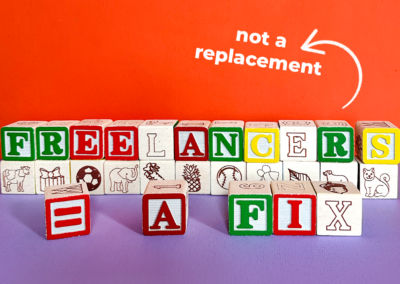Every so often there is a topic about HR or recruitment and hiring that stirs up a lot of conversation. A few years ago, a conversation-starter was that recruiters only spend six seconds looking at resumes. Six seconds!
From a business standpoint, I get it. Sometimes one job can receive hundreds of resumes and if something doesn’t jump out immediately, you have to move on. But from a people standpoint, from a humanity standpoint, it’s a wonder anyone ever gets hired for anything if that’s the norm.
Bias baked in
Applicant tracking systems and the use of keywords and/or screening questions were supposed to help recruiters, hiring managers or HR professionals with the problem of “too many resumes, not enough time.” They were supposed to be handy tools to save time and to separate the wheat from the chaff, so to speak, when it came to applicants. It sounds great in theory. However, when human assessment is removed from resume review and a large portion of the selection process is left to an automated system, the door is opened to bias against resumes that are not in the typical chronological format and against applicants whose career paths have been non-linear or non-traditional.
This, of course, is not to say that relying solely on human selection alleviates bias. All humans have bias, and all systems have bias because they are built by humans. They are designed to be biased. The theory is that these biases help make better hiring decisions. The reality is that a lot of applicants, particularly those with non-linear career paths, are overlooked or dismissed because they don’t fit a “perfect applicant” mold. Their related experience or expertise may not be ascertained in six seconds or sufficiently conveyed through an automated system.
What is a non-linear career path?
A non-linear career path is one that does not follow the “traditional” path of progressing through different levels of a career in a particular field or industry. Think career ladders. Assistant to Coordinator to Associate to Manager to Director to Vice-President, etc. This type of progression is what recruiters and hiring managers look for when they review resumes. They also look for a certain number of years of experience in certain roles, doing certain tasks or having certain responsibilities. Someone whose career path has been non-linear will have experience that doesn’t necessarily look like this. However, it does not mean they aren’t qualified for or would not be successful in the position being filled. The question becomes, how to get the recruiter or hiring manager to see it?
Overcoming bias in human selection
Until very recently, there was an unspoken (and sometimes spoken) belief in the recruitment space that an applicant who did not use a chronological resume was trying to hide something, such as gaps in employment. This belief also aligned with a bias against “job hopping” that many hiring managers had. In addition to experience and education, they wanted to see long tenures, which presumably indicated loyalty. For this reason, functional resumes would often be immediately rejected.
For someone with a non-linear career path, however, a functional or targeted resume may do a better job of highlighting their qualifications for the job they are seeking. In recent years, the rise of professional freelancing, entrepreneurship, and a greater focus on personal fulfillment have made it more common for jobseekers to have employment gaps or non-linear career trajectories.
Progressive recruiters and hiring managers understand this.
Overcoming bias in automated assessment
Automated systems aren’t only biased against non-linear careers and non-chronological resumes. They can be biased against other applicant data points as well, just like humans. The companies that build these systems must be intentional about not allowing the biases of the individuals building the systems to infiltrate the system and negatively impact the outcomes. This applies to not only applicant tracking systems, but any automated system used during the recruitment and hiring process.
This is where the importance of diversity in the workplace comes in. Having people with different backgrounds and experiences in the room when systems are being developed and built and when employers are deciding which systems to use makes it more likely that different perspectives will be considered, making it less likely that there will be a negative impact on the job applicants. The same goes for when the hiring process itself is being defined.
Bias is inherently present when human beings are involved. Whether it’s over-reliance on employee referrals and personal networks, or a rigid preference for a particular educational background or institutions, or unconscious (or conscious) affinity with a specific race or gender identity. There is always an opportunity for bias to creep into the process. Deploying automation doesn’t eliminate that. However, if recruiters, hiring managers, and HR professionals commit to creating processes that combine the best parts of automated systems with the best parts of the human element, taking into account today’s employment trends, everyone has a better chance of success.
Jobseekers with non-linear career paths should use the resume type that best communicates their experience and, if necessary, use a succinct cover letter to explain how their experience aligns with the job. Communicating directly with recruiters and hiring managers via email or LinkedIn can serve the same purpose. Just as with those on the employer side, using the best parts of the human element (communication and storytelling) in combination with automated tools will offer a better chance of success at overcoming screening bias.
Tamara’s Socials: Twitter, LinkedIn, Website
Editor’s Socials – Elisa Camahort Page: Instagram, Twitter, LinkedIn



